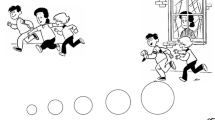Abstract
The aim of this study was to recognize the possible psychological advantages when children with a severe CNS disorder like myelomeningocele (MMC) are given very early rehabilitation treatment. One hundred and seven newborns with MMC seen between 1971–1992 were prospectively analysed with respect to two different therapeutic approaches. The children born during the period 1971–1980 did not receive very early therapeutic rehabilitation treatment, whereas those born during the period 1981–1992, received this treatment. In the latter group, special attention was paid to support an improvement in the difficult relationship between the parents and the child with MMC as well as between parents and caregivers. The following statistically significant differences between the two treatment programmes were found: (1) all children achieved independent locomotion at 5 years, in the very early intervention group, compared to only 35% (P<0.001) in the group without this programme. Orthopaedic operations in the first-mentioned group were markedly reduced; (2) urological surgery decreased drastically in the group with very early urodynamic rehabilitation. Thus, there were 0.6 operations per patient in the older group, but only 0.06 operations per patient in the younger one (P<0.001); (3) normal schooling was reached by 76% (22/29) and social continence by 80% (23/29) of the children with very early interventional therapy. In the older group only 54% reached normal schooling (P<0.05) and 29% social continence (P<0.001). The very early co-ordinated medical and physiotherapeutic rehabilitation treatment of children with MMC usually reduces the psychosocial stress and improves the quality of life of these children and of their families.
Similar content being viewed by others
Abbreviations
- MMC :
-
myelomeningocele
References
Bettex M (1979) Indikationen und Kontraindikationen in der Behandlung der Myelomeningozele und des Hydrozephalus. Z Kinderchir 27: 120–124
Bobath K, Bobath B (1967) The very early treatment of cerebral palsy. Dev Med Child Neurol 9: 373
D'Avignon M, Norén L, Arman T (1981) Early physiotherapy ad modum Vojta or Bobath in infants with suspected neuromotor disturbance. Neuropediatrics 12: 232–241
Guiney EG, Surana R (1994) Presidential Address to the Society for Research Into Spina Bifida and Hydrocephalus, at Hartford, Conn., USA. Eur J Pediatr Surg [Suppl]: I: 5–9
Hunt GM (1990) Open spina bifida: outcome for a complete cohort treated unselectively and followed into adulthood. Dev Med Child Neurol 32: 108–118
Kaiser G, Rüdeberg A (1986) Comments on the management of newborn with spina bifida cystica — active treatment or no treatment. Z Kinderchir 41: 141–143
Köng E (1972) Die Früherfassung zerebraler Bewegungsstörungen. In: Zurbrügg RP (ed) Früherfassung von Kinderkrankheiten. Pädiatrische Fortbildungskurse für die Praxis. S Karger, Basel, pp 1–13
Lapides J, Diokno AC, Silber SJ, Lowe BS (1972) Clean, intermittent selfcatheterisation in the treatment of urinary tract disease. J Urol 107: 458–461
Lorber J (1971) Results of treatment of myelomeningocele. An analysis of 524 unselected cases, with special reference to possible selection for treatment. Dev Med Child Neurol 13: 279–303
Lorber J, Salfield AW (1981) Results of selective treatment of spina bifida. Arch Dis Child 56: 822–830
Malone PS, Ransley PG, Kiely EH (1990) Preliminary report: the antegrade continence enema. Lancet 336: 1217–1218
Malone PS, Wheeler RA, Williams JE (1994) Continence in patients with spina bifida: long term results. Arch Dis Child 70: 107–110
Norén L, Franzén G (1981) An evaluation of seven postural reactions (Lagereflexe selected by Vojta) in twentyfive healthy infants. Neuropediatrics 12: 141–149
O'Brien J, Austen M, Sethi P, O'Boyle P (1991) Urinary incontinence: prevalence, need for treatment, and effectiveness of intervention by nurse. BMJ 303: 1308–1312
Ryan KD, Ploski Ch, Emans JB (1991) Myodysplasia—the musculoskeletal problem: habilitation from infancy to adulthood. Phys Ther 7: 935–945
Shandling B, Gilmour RF (1987) The enema continence catheter in spina bifida: successful bowel management. J Pediatr Surg 22: 271–273
Surana RH, Quinn FMJ, Guiney EJ, Fitzgerald RJ (1991) Are the selection criteria for the conservative management of spina bifida still applicable? Eur J Pediatr Surg [Suppl] I: 35–37
Wyndaele JJ, Maes D (1990) Clean intermittent catheterisation: 12 follow up. J Urol 143: 906–908
Author information
Authors and Affiliations
Rights and permissions
About this article
Cite this article
Rüdeberg, A., Donati, F. & Kaiser, G. Psychosocial aspects in the treatment of children with myelomeningocele: An assessment after a decade. Eur J Pediatr 154 (Suppl 4), S85–S89 (1995). https://doi.org/10.1007/BF02191514
Issue Date:
DOI: https://doi.org/10.1007/BF02191514




